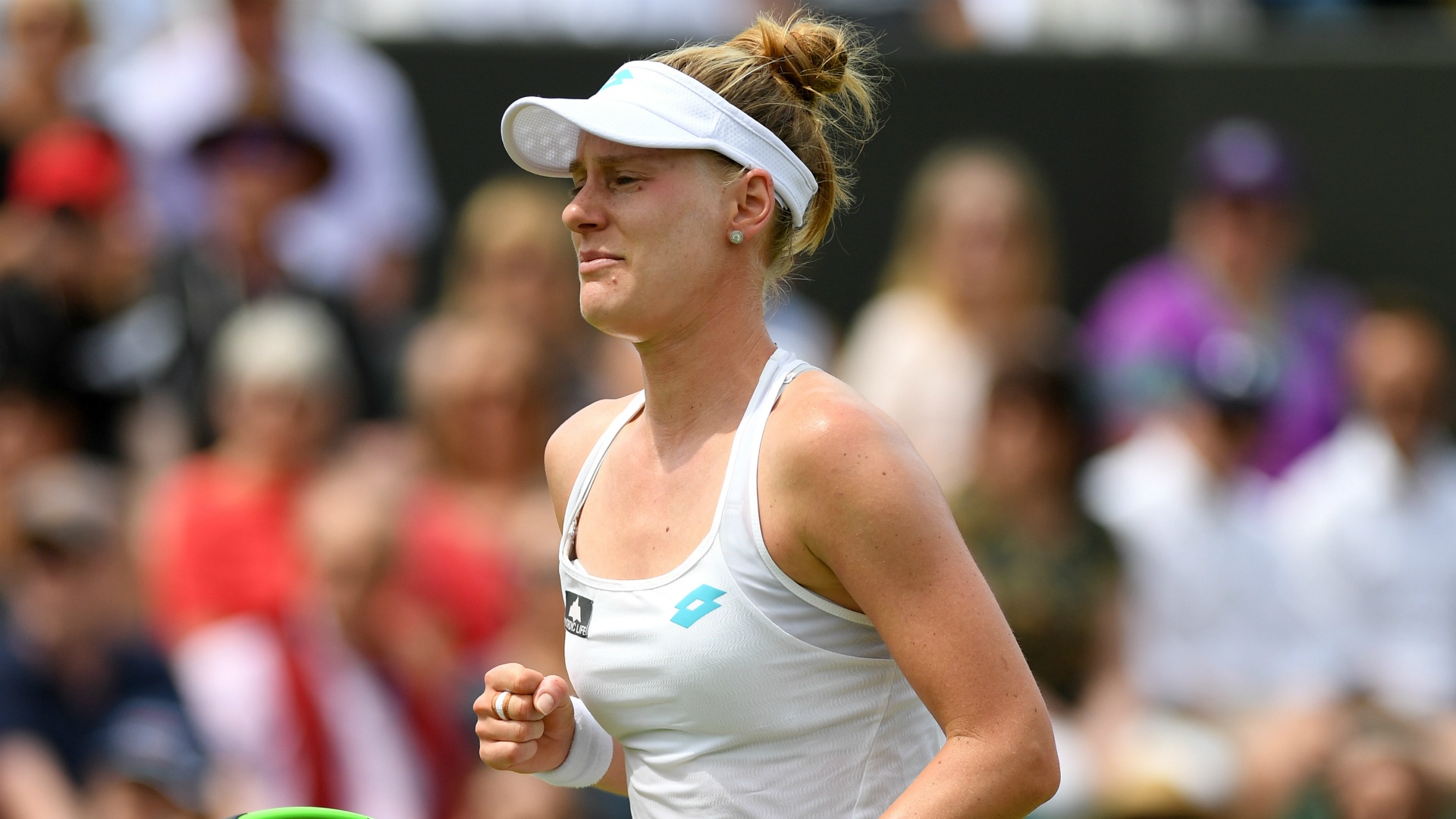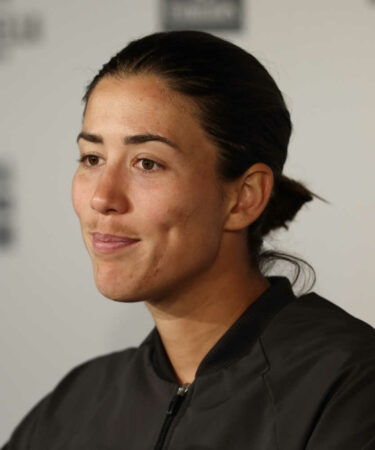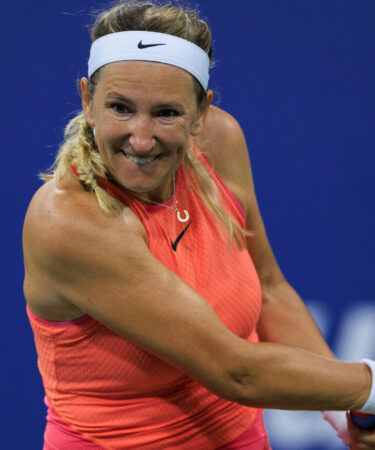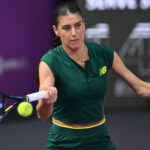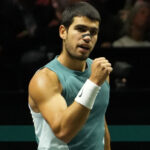Sam Sumyk, the coach who switched from the WTA to the ATP: “Now we don’t give you the time you need”
In an exclusive interview, the Frenchman details his move from coaching women to men, discusses his philosophy and his hopes with Arthur Cazaux
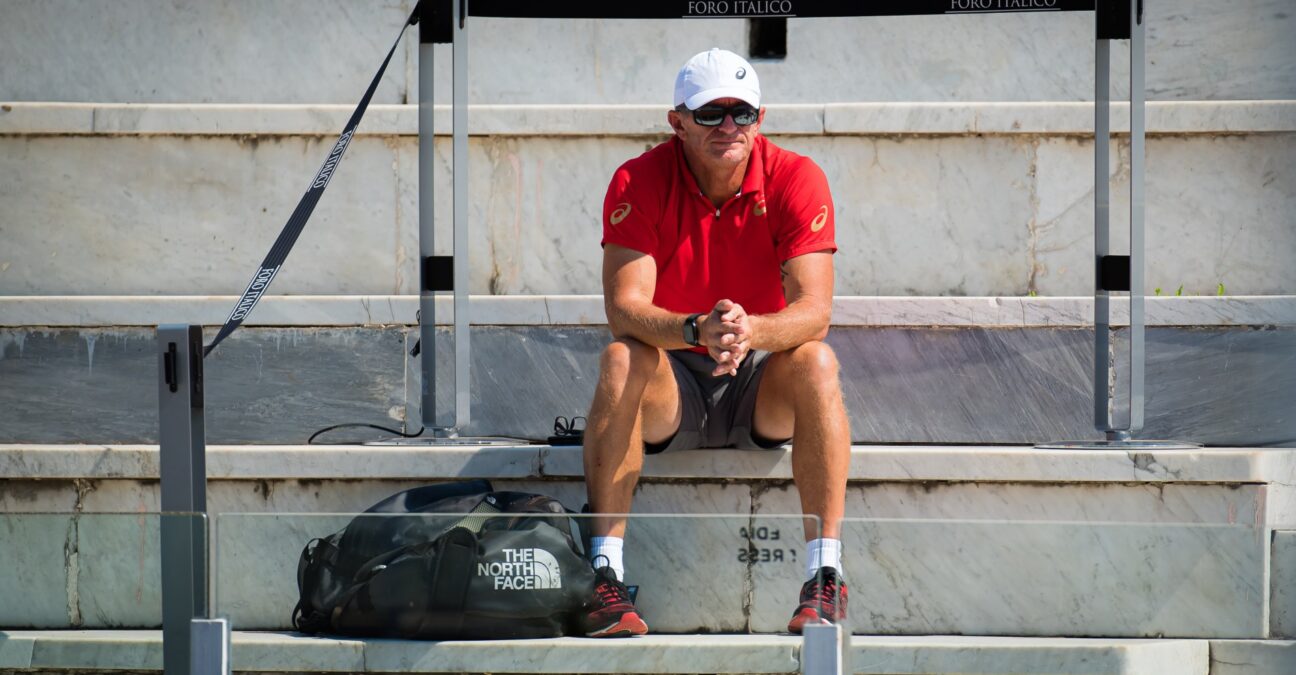 Zuma/Panoramic
Zuma/Panoramic
Sam Sumyk on the ATP circuit is a small event in the world of tennis. If he were a Swedish coach, we wouldn’t have been surprised as we’ve been used to seeing them switch from the women’s to the men’s circuit over the years, like Thomas Johansson, who has worked with David Goffin and Kei Nishikori as well as Sorana Cirstea and Maria Sakkari. In France, there is of course Patrick Mouratoglou, who has navigated between the two circuits throughout his career, and Emmanuel Planque.
But these are isolated cases. So when Sumyk, with his WTA record, appears with Arthur Cazaux this summer and signs up for the 2025 season, it’s not insignificant. The Breton, currently in Dubai with Cazaux, has spent three decades winning Grand Slam titles and world No 1 titles on the WTA Tour with Garbine Muguruza and Victoria Azarenka.
He has also worked with Vera Zvonareva, Eugenie Bouchard, Anastasia Pavlyuchenkova, Donna Vekic, Meilen Tu, Anne Kremer and Elena Likhovtseva. He was in Harmony Tan’s team when she enjoyed her best season in 2022 with a fourth-round run at Wimbledon. How did he end up on the ATP circuit? How does he look back on his career after so many years? And what about French tennis?
Not many of you make the switch from the WTA circuit to the ATP circuit… Is it a natural transition, or a strange one?
I don’t know if it’s natural, but it’s certainly not strange. My impression is that when, like me, you’ve been coaching on the women’s circuit for a long time, you’re probably labelled a bit of a women’s coach. When certain players are looking for a coach, I don’t think they think of someone who is on the women’s circuit. It also depends on people’s connections.
we’re probably a bit pigeon-holed
Wasn’t it just a box to tick, ‘one day I’ve got to get on the ATP circuit’? For example, you’ve also had discussions with Luca Van Assche…
No, never. In the 30 years I’ve been on the circuit, I’ve twice had the opportunity to coach men, but I wasn’t free so I kindly turned it down.
So it’s a stereotype, because some people think that you don’t coach on the WTA circuit in the same way as you coach an ATP player?
It’s obviously different because you’re dealing with people. We coach different personalities. Even if you’re coaching two girls, they’re two different people, maybe two different cultures, or even two different generations. You can have a player who’s at the end of her career and one who’s just starting out. That’s what it’s all about. After that, there are bound to be differences between men and women, of course, but we’re still in the same sport. That’s why I say you can train anyone, there’s no problem. I don’t think there’s a group of coaches for women and a group of coaches for men.
And yet on the Tour you can clearly see a difference…
I don’t know why. But I’ve bumped into Goran (Ivanisevic) here and he’s going over to the girls. That’s great because it’s time to see more and more real coaches on the women’s circuit. I told Goran, it’s great. I hope it works out, I hope he stays with Elena Rybakina for a long time, but the fact that it’s starting is already great, it’s a pretty exciting partnership, something I’m going to follow, because I like the player, I think she plays incredibly, and I like Goran, who’s a coach after all. The more coaches there are, the higher the standard of the girls. I’m talking about a real coach, I’m talking about a coach, and I think that the level will naturally rise.

“quite a few girls don’t have a tennis expert in their group”
Why were there fewer of them?
I’ve no idea! I don’t know why things have changed so much for women. A lot of people who aren’t tennis specialists have taken the place of tennis specialists and I don’t know why. I just observe. I’m lucky enough to be able to continue, but now I see that there are quite a few girls who don’t have a tennis expert in their group.
You’ve coached players to world No. 1 status and Grand Slam victories, and now you’re taking on a player who’s still a long way from that, who’s launching his career: it’s a totally different challenge…
Yes, but I think it’s a great project and it will allow me to learn even more and become a better coach. You put together an interesting player, an interesting person, and a project that’s going to make me a better coach, and I’m not going to think about it for 15 years. It’s not about rankings. For me, it’s about having fun. And when I say enjoy it, I don’t mean to take the project lightly. No, I’m not. In this kind of association, it has to be good for the player, but it also has to be good for me, in the sense that I’m going to learn something. I start to get bored when I’m not learning anything. Then it becomes a real job and I say to myself, I’d better stop. That’s how I feel about it, I don’t calculate too much.
It’s often said that you have a different approach, a different vision: do you accept that you don’t do what others do?
I don’t really know what other people do, so I can’t really compare things. Like everyone else, I’m immersed in the game, so I see coaches working with their players. I watch and observe. There are very few with whom I share and discuss. I’m not necessarily aware of all that.
So there’s no Sumyk method?
I don’t believe in methods. I believe in successful formulas, but I don’t believe in methods. There is no method, it doesn’t exist. But there are formulas. For each project, you have to find the formula for success for that project. A method means that you’ve found the trick and that you apply it all the time, with everyone, and it will work. But that’s not true. Selling a method is a scam.
Goran said to me the other day, ‘She misses two FOREHANDS, YOU’RE FIRED’
What you’ve achieved with Garbine Muguruza or Victoria Azarenka, you’re not doing the same with others…
No. Yes and no, rather. Of course, as it’s part of my experience, but it’s not just those players. I’ve been lucky enough to work with most of the players for a long time, so these experiences are ingrained in me and my way of doing things has certainly evolved, so yes, in that sense. But no, because every time, it’s got nothing to do with that. Yes, we’ll talk about technique, tactics, nutrition, physical preparation, mental preparation, you tick the same boxes almost every time, but you don’t go about it in the same way. I know that in the new project, I’m going to say some stupid things, I’m going to say some things that aren’t so stupid, there are things that we’re going to explore that will work, others that won’t, but the basic principles are more or less the same. But we won’t go about it in the same way. The better I know my athlete, the better, but that takes time. Except that now you’re not given that time. Goran said to me the other day, ‘She misses two forehands, you’re fired’. I used to say two games, I was a bit more patient. I told him, ‘Yes, it’s always your fault.’ We had a laugh.
This impatience is relatively recent, isn’t it?
Yes, we used to give you more time. We also gave you more time to weather the storm. That’s one of the keys to success.
Your collaboration with Arthur Cazaux comes at an important time in French men’s tennis, with the arrival of a whole new generation. Do you enjoy helping French tennis?
Yes, because I’ve always wanted to play a part in the development of French tennis. I want to see French tennis on the highest step of the podium. I’ve always had that desire, it’s just that my career hasn’t had those opportunities, that’s all. But I’m willing to try and play my part in making things run smoothly, yes. I’m really motivated at that level, but I’m not the only one, there are plenty of others.
I want to see French tennis on the highest step of the podium
We always tend to say that profiles that are a bit atypical in France are complicated. We may have lost some quality people like you, Gilles Cervara or Fred Fontang and those who have gone to Canada for example, no?
I think so, but I’m not the one who decides. The names you mention are people who have accepted the fact that they are working with the guillotine hanging over their heads. And that’s what they like and what they need to move forward, to develop, to be the best coaches they can be. But if you take away the guillotine, you become less good. So maybe we weren’t necessarily cut out to be cushy in our corner. If anything, we’d get bored! The guillotine is not a pleasant thing to have hanging over your head, it’s not rosy every day, but it suits us because it makes us better.
I can’t have the federal mentality, because I’ve only been in the federal system for three weeks. It’s not my apprenticeship, it’s not my career, it’s not my experience, it’s not my environment, it’s not my day-to-day life. Nobody comes and tells me that all forehands and backhands have to be played like that.
“In France, we’re no more stupid than anyone else”
I’m going to play devil’s advocate here, but with your record on the WTA Tour, aren’t you surprised that no one has come looking for you in France? At the moment, especially given the state of French women’s tennis…
Yes, it crossed my mind, but only for two seconds. Two seconds, because sometimes people talk to me about it. Harmony had progressed and achieved results she’d never done before, and that surprised a lot of people. In just over a year, she’d done a lot of work and made a lot of progress. But all that hasn’t stopped me from wanting to help French tennis. Just because I live in California doesn’t mean I don’t want to. I’m not the only one, I know lots of people who have a lot of experience but who aren’t asked. What’s interesting is that I’m not asked to help move things forward, but on the other hand, they’re able to call me to ask my opinion. That’s the fun of it. That doesn’t mean that I or anyone else would do better, but if you have big ambitions, you generally try to give yourself the best possible means of achieving them.
The comparison with Italy is a bit painful at the moment… Do you find their results intriguing?
No, because I already knew. I’ve been to Italy, I’ve been to academies in Italy and I know quite a few young players. I’ve seen them work, I’ve seen the changes in their tournament schedule. We’ve seen them work hard and give themselves the means, but maybe we didn’t think it would work so well. But it didn’t happen in a day, because they’ve been at it for at least eight or ten years.
Nothing we couldn’t do…
In France, we’re no more stupid than anyone else. It’s as simple as that. If we really wanted to, we could do it, couldn’t we? At some point, if we don’t succeed, it’s because we don’t really want to, right? I grew up with French tennis too. It was the benchmark. When I was starting out, when I was growing up, it was the benchmark. That’s all you heard about the French system. It was copied, it was observed, it was studied. Not any more. We still hear it because people are nice, they flatter us a bit, but it’s not true. They’ve also put us to sleep. The more you flatter people, the more they fall asleep. They’re happy.
That’s all we used to hear about the French system… Not any more
The players have never earned so much money, but that’s not the case for the coach. It even seems as if your situation is regressing…
It’s always been the same story since I’ve been on the circuit. There are no rules, there’s no protection. We’re not to be pitied, but there’s no safety. That was the case 30 years ago when I started out and it hasn’t changed.
What’s the key to overcoming that, to keeping the sacred fire burning? It takes a special kind of mentality, doesn’t it?
It’s not for everyone. For me, it suits me and it’s quite easy because tennis doesn’t drive me mad. Yes, I’ve had my head in the game all the time, but I’ve got a trick: when I’m not with the team or on the circuit, tennis only crosses my mind. I think about it, but it just crosses my mind during the day. In fact, I used to immerse myself in it when the plane was taking off, when I was leaving. And from the moment I get back and the plane takes off for the return trip, the tours are over, and that’s it, tennis becomes stealth in my mind. Between the two take-offs, it’s all I can think about.
In the objectives you set with Arthur, in the run-up to 2025, are there any things you’ve already changed?
The objectives are mainly work objectives, in fact. And in work, and in his role as an athlete, there’s obviously the game, the technique, having good habits on a daily basis, being able to repeat them every day. It’s a certain form of discipline, which requires a bit of work on behaviour. So be careful, he has good behaviour, but you’re always trying to improve all the parameters of high performance. High performance is good, it’s nice, but you want to get to the very, very high performance, which is still at another level.
Arthur will be in an unprecedented situation in Melbourne when he defends the points in his first Grand Slam round of 16. How will you deal with that?
I’m not sure what I’m going to do, but I’m not sure it’s a big worry either. The way we’re going to look at it, and I hope he’ll agree, is that when we leave for Australia, we’re only going to look at the Race rankings. Who cares about the rest? I like the race ranking where everyone starts at 0-0. It’s a way of doing things, it doesn’t mean it’s going to work every time. But when you look at the Race, you can see whether you’re making progress or stagnating, and that gives you a different view and a bit of perspective. It’s also a question of mindset: you can’t be sorry a year later for having played well a year earlier, and if you work hard you’ll pick up the points again at some point. The priority is your work plan, being in good health, because good health allows you to train every day, so if you train every day, you’ll make progress, you’ll get somewhere.
the balls? “A real problem”
You talk about good health, and that also brings up one of the old debates on the tour: calendar too full or not? And what about players who complain but play exhibitions?
It also shows that tennis is doing well… There are plenty of tournaments. If there are exhibitions, it’s because things are going well and people are coming to watch. We’re not going to complain. When you have the opportunity to play all the big tournaments and you’re lucky enough to be offered exhibitions, it’s a good problem to have and a position that all players would find enviable. So once you’re there: you don’t complain, you do the best you can. And then the agents who take their commission, they’re not going to slow you down. There are issues we’ve been complaining about for decades that haven’t been resolved, but it’s complicated.
One of these issues is THE BALLS…
It’s a real problem. The solution is very simple, but impossible. It’s an economic problem, not a problem of common sense, because if you don’t, you take a particular brand and from 1 January to 31 December you only play with that brand. But the ball business is quite competitive and each tournament makes its own deals. So it’s very simple, the same ball, the same brand from start to finish. But with the current business model, that’s impossible. Now, having the same ball at every tournament in Australia, and then the same ball at every clay-court tournament, would already be a big step forward, but that’s not necessarily the case all the time either. If we could just reduce the number of ball changes over the year… Of course, players are right to complain, because it’s true that it causes problems for the shoulder, the elbow and the wrist and that you’re constantly suffering from micro-trauma. If we could have fewer changes during the year, that would already be a nice improvement.


